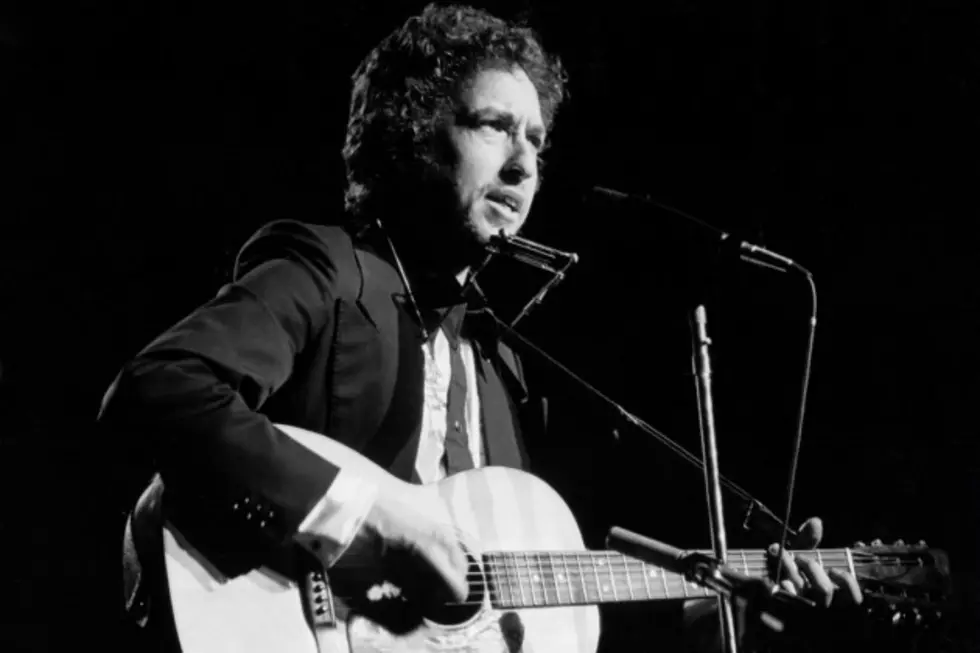
41 Years Ago: Bob Dylan Returns to the Road for First Time Since 1966
In 1966, Bob Dylan -- with his backing band the Hawks in tow -- embarked on a world tour that left him beaten, cynical and exhausted. With fans, especially in the U.K., still reeling from the singer-songwriter's transformative switch from earnest, acoustic guitar-playing folkie to smartass, electric guitar-wielding rocker, the shows were bitter, confrontational and groundbreaking.
But Dylan had had enough by the time the tour ended. In July, he was riding his motorcycle near Woodstock, N.Y., when he crashed. His recovery provided an ample opportunity for him to bow out of the spotlight, and the following year, he and the Hawks -- who'd soon be rechristened the Band -- would quietly make the fabled Basement Tapes.
Then Dylan made 'John Wesley Harding.' And 'Nashville Skyline.' And 'Self Portrait.' And a few other albums of widely diverse quality into the '70s. But aside from a few stray live appearances, Dylan stayed off the road, happy to play family man, recording artist and the reclusive and reluctant rock star he'd been building up to. But all that changed on Jan. 3, 1974, when Dylan, with the Band once again accompanying him, launched a six-week tour that would signal his return among music royalty.
By the time the tour ended on Feb. 14, they'd played 40 shows in 21 North American cities, including Toronto, Boston, Atlanta, New York and Seattle. It was a historic return for Dylan -- particularly since the Band, now one of rock's premier groups, were onstage with him. Two weeks after the tour's start at Chicago Stadium, they released 'Planet Waves,' the first full album to feature Dylan backed by the Band (they previously played on a few of the 'Blonde on Blonde' sessions from 1966, and 'The Basement Tapes' had yet to see an official release).
Set lists changed and evolved nightly, but mostly they included the old songs fans wanted to hear (by the middle of the tour, 'Forever Young' was 'Planet Waves'' only number). After all, it had been eight long years -- an eternity back then -- since most of them had a chance to see Dylan onstage. The opening show was packed with classics like 'All Along the Watchtower,' 'Ballad of a Thin Man,' 'The Times They Are A-Changin'' and 'Like a Rolling Stone.' The Band also played some of their songs, including 'The Night They Drove Old Dixie Down' and 'Stage Fright.'
But as he's done time and time again, Dylan didn't play straight versions of his famous songs. Instead, he reworked their arrangements, twisting phrases -- musical and lyrical ones -- while sharpening the focus of the melodies (or omitting them altogether). At times, they sounded nothing like the recorded versions fans were familiar with.
And over the next couple shows, the tour's sets took shape: Dylan, backed by the Band, played six songs, followed by the Band alone for five cuts. Dylan performed three more songs with the group and then played five solo acoustic numbers. The Band then played a few more songs on their own before being joined by Dylan for a concert-ending set of four songs, including 'Most Likely You Go Your Way (And I'll Go Mine),' which capped every show except for a couple early ones and few of the final ones.
When it all wrapped up on Valentine's Day, Tour '74 had become one of rock's biggest concert draws ever, playing sold-out shows at almost every stop. It was also one of the biggest financial scores at the time, with ticket sales, mostly by mail, reaching nearly $100 million -- a massive sum in 1974.
In June, a double album, 'Before the Flood,' co-credited to Dylan and the Band, was released. The record was mostly culled from the tour's two final dates at the Los Angeles Forum. It's a great recording, summarizing the tour's freewheeling spirit and the sets' dynamic showcases at the end of its run. You'd never know that both Dylan and members of the Band, as they later claimed, weren't having much fun onstage. Because the evidence, more than 40 years later, suggests otherwise. Either way, it got Dylan back on the road, where he'd remain for much of the next four decades.
See the Yearbook Photos of Bob Dylan and Other Rock Stars
More From Ultimate Classic Rock









